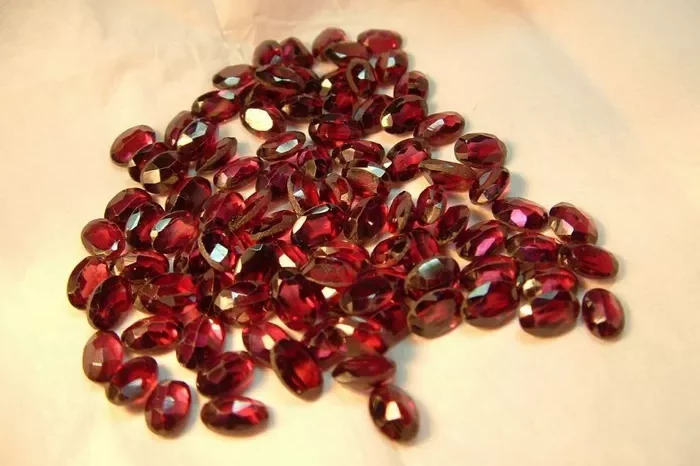Garnets are a fascinating group of minerals that have captivated human interest for thousands of years. Known for their rich colors and crystal clarity, garnets are not only beautiful but also hold significant industrial importance due to their hardness and abrasive properties. In this article, we will delve into the garnet family, explore the different types, and identify which garnet is the hardest.
Introduction to Garnets
The term “garnet” refers to a group of silicate minerals with similar physical properties and crystal forms but different chemical compositions. The garnet group is typically divided into two series: the Pyralspite series and the Ugrandite series. These two series consist of six primary species:
Pyrope
Almandine
Spessartine
Uvarovite
Grossular
Andradite
Each species has a distinct chemical composition, contributing to variations in color, density, and hardness. The garnet’s crystalline structure is isometric, meaning its crystals are generally well-formed and symmetrical, contributing to its aesthetic appeal.
Understanding Hardness in Garnets
Hardness in minerals is commonly measured using the Mohs scale, which ranks minerals based on their ability to scratch softer materials. The scale ranges from 1 (talc) to 10 (diamond). Garnets generally fall between 6.5 and 7.5 on the Mohs scale, making them relatively hard and suitable for various applications, including jewelry and industrial abrasives.
The Hardest Garnet: Almandine
Among the different species of garnets, Almandine is recognized as the hardest. Almandine garnets typically measure around 7.5 on the Mohs scale. Their hardness makes them particularly valuable in both gemological and industrial contexts. Let’s explore what makes Almandine garnets stand out:
Chemical Composition and Structure
Almandine is an iron-aluminum garnet with the chemical formula Fe₃Al₂(SiO₄)₃. The presence of iron in its composition contributes significantly to its hardness and density. The iron atoms in the crystal structure create strong bonds, making it more resistant to scratching and abrasion.
Physical Properties
Color: Almandine garnets are typically deep red to reddish-brown, though they can occasionally exhibit a violet hue. This rich coloration is due to the iron content in their structure.
Density: Almandine garnets have a specific gravity of about 4.1 to 4.3, making them among the densest of the garnet group.
Luster: These garnets have a vitreous to resinous luster, giving them a brilliant and attractive appearance when cut and polished.
Industrial Applications
Due to their hardness, Almandine garnets are widely used as abrasives in various industries. They are employed in:
Water Jet Cutting: Almandine garnets are often used in water jet cutting machines to slice through tough materials like metal and stone with precision.
Sandblasting: Their hardness and density make Almandine garnets ideal for sandblasting, where they are used to clean and prepare surfaces by removing rust, paint, and other coatings.
Abrasive Papers: These garnets are also used in the production of abrasive papers and sanding discs, which are essential tools in woodworking, metalworking, and other industries requiring smooth finishes.
Gemological Significance
In addition to their industrial uses, Almandine garnets are highly prized in the jewelry industry. Their deep red hues and excellent hardness make them ideal for various types of jewelry, including rings, necklaces, and earrings. Almandine garnets are often cut into cabochons or faceted to enhance their natural beauty.
Comparing Almandine with Other Garnets
To fully appreciate the hardness of Almandine, it’s essential to compare it with other garnet species:
Pyrope: Pyrope garnets typically score about 7 to 7.5 on the Mohs scale, similar to Almandine. However, they are generally less dense due to the presence of magnesium in their structure.
Spessartine: With a Mohs hardness of about 6.5 to 7, Spessartine garnets are slightly softer than Almandine. They are often orange to reddish-brown due to their manganese content.
Grossular: Grossular garnets range from 6.5 to 7.5 on the Mohs scale, but they are usually less hard than Almandine. Their color can vary widely, from green to orange to near colorless.
Andradite: Andradite garnets, including the valuable Demantoid variety, have a hardness of around 6.5 to 7. They are known for their exceptional dispersion and brilliance.
Uvarovite: This rare green garnet has a hardness of about 6.5 to 7, making it softer than Almandine. Uvarovite’s vibrant green color is due to its chromium content.
Factors Affecting Garnet Hardness
Several factors can influence the hardness of garnets, including:
Chemical Composition: The specific elements and their arrangements within the garnet’s crystal structure play a crucial role in determining its hardness. For instance, the iron in Almandine garnets strengthens the crystal lattice, enhancing hardness.
Crystallinity: The quality of crystal formation also impacts hardness. Well-formed, flawless crystals tend to be harder and more durable than those with inclusions or irregularities.
Heat Treatment: Some garnets undergo heat treatment to enhance their color or clarity. While this process can improve appearance, it may slightly affect the hardness, depending on the treatment’s intensity and duration.
See Also: When Was Rhodolite Garnet Discovered?
Identifying Almandine Garnets
When identifying Almandine garnets, gemologists consider several factors:
Color: Deep red to reddish-brown hues are characteristic of Almandine garnets. However, color alone is not definitive, as other garnets can exhibit similar shades.
Refractive Index: Almandine garnets have a refractive index ranging from 1.76 to 1.83. Gemologists use refractometers to measure this property and help identify the garnet species.
Inclusions: Almandine garnets often contain needle-like inclusions, which can be observed under magnification. These inclusions can help differentiate them from other garnet types.
Spectroscopy: Gemological laboratories utilize spectroscopic analysis to identify the specific elements within a garnet, aiding in accurate classification.
Conclusion
Almandine garnets stand out as the hardest among the garnet group, thanks to their iron-rich composition and robust crystal structure. Their impressive hardness, combined with their rich color and brilliance, makes them highly valuable in both industrial applications and jewelry. Understanding the properties and care requirements of Almandine garnets allows gem enthusiasts and professionals to appreciate their unique qualities fully. Whether admired for their beauty or utilized for their abrasive capabilities, Almandine garnets truly exemplify the remarkable diversity and utility of the garnet family.


